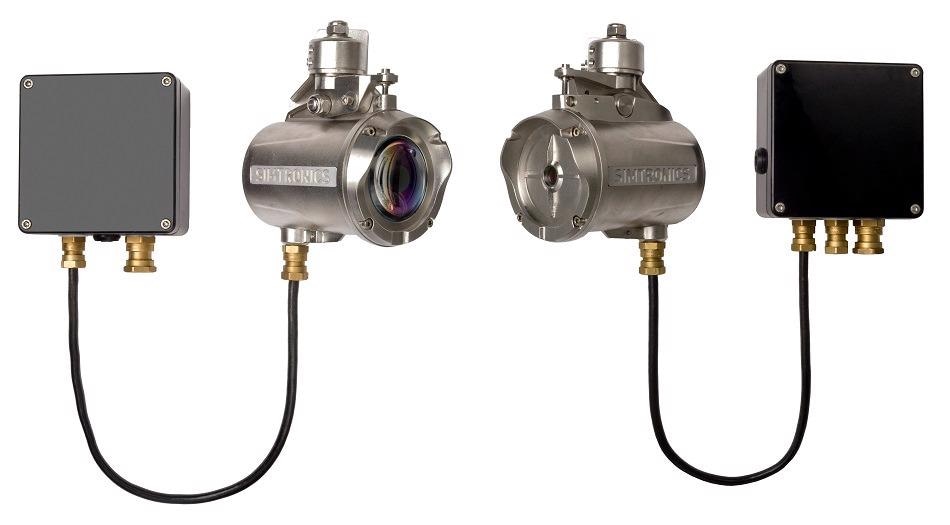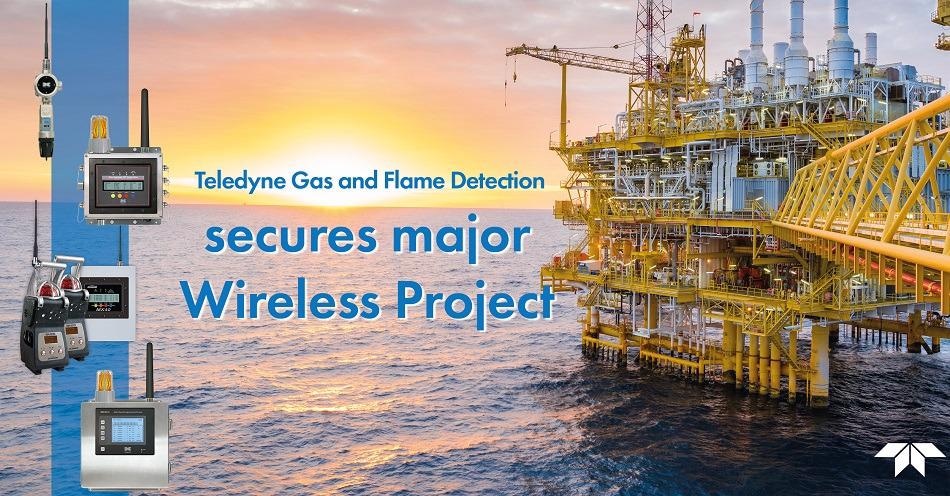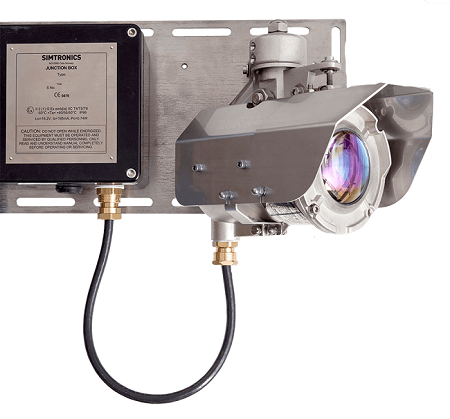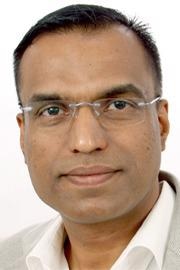In this interview, AZoSensors talks to Sudhakar Karkera of Teledyne Gas and Flame Detection's Middle East Division, about the benefits of the GD1's tunable laser diode when used in the Hail and Ghasha Sour Gas Development.
Can you begin by giving a brief overview of Teledyne Gas and Flame Detection, the work you do, and the markets you serve?
Teledyne Gas and Flame Detection cater to all industries, including water waste, water, food and beverage, oil and gas. For Teledyne GFD in the Middle East, the major market is and will always remain the Oil & Gas markets.
I have worked in Teledyne Gas and Flame Detection division for more than 7 years and I am responsible for the Middle East region. My work covers sales and entails business development, finding new customers, finding new solutions, resolving technical and commercial issues, and engaging with end-users and engineering teams.
Why is gas detection so important within the Island district?
The primary purpose of any gas detection is protecting human lives, but it also helps to improve operational safety and integrity.
From the end user's perspective, it helps to reduce production downtime. All the end users have CSR obligation responsibilities, meaning it is important to protect human life but also to protect the environment and the assets. In any industry, including oil and gas, the objective of gas detection remains the same.
That is where we come into the picture because when we sell gas detection, we ensure that we not only save human lives, but we provide solutions to increase operational integrity and at the same time reduce operational costs. We recommend a mix of gas detection technology to improve the detection reliability and availability.
We have products like the GD1 an open path laser gas detector and other wireless solutions and a fixed gas detector in our portfolio. We also offer portable gas detection solutions. It depends upon the end-user type and their application requirement.
We can do a fixed type. We can do wireless type. We can do area monitors. We have varied types of gas detection to cater to different needs. Due to flexibility in our product range, we can offer a mix of gas detection technology to improve Reliability & Availability.

When we talk about sour fields (oil & gas), we need to be aware that these valuable natural resources are constantly depleting. The big Oil & Gas companies keep evolving - new techniques to drill deep into the earth’s crust.
The deeper you go, you extract more hydrogen sulfide, sulfur dioxide, Hydrocarbon gases, Condensate, etc. Of course, the extracted sulfur, condensate, etc. turns into a higher added value but these extracted hydrogen sulfides, sulfur dioxide. Hydrocarbon gases also pose a huge threat.
The Hail and Ghasha fields are very important to UAE in the sense that this will add almost more than 1 billion cubic feet of gas per day from 2024, in addition to 120,000 barrels of oil and the high-value condensate.
Developing the Hail & Ghasha field is very important for UAE, so the expectation of the end-user is very high. They expect reliable and highly Available Gas detection for developing this field.
What solutions have Teledyne Gas and Flame Detection provided the Hail and Ghasha Sour Gas Development?
This project field is under development at this moment, and this field is expected to go live in 2024 when they start producing.
We had been tasked by the main contractor to ensure we offer reliable and 24x7 Available Wireless Gas Detection. Because it is so critical here, the gas detection has to be with low maintenance, and at the same time, it has to be available 24/7. So high reliability and high availability were the fundamental criteria. A compromise was not an option available to me.

Keeping the above in mind, we offered fixed gas detectors connected via wireless mesh from Teledyne Detcon (USA) as a primary gas detection to detect the LEL explosive gases and hydrogen sulfide gases.
Complementing the above we have a second line of defense, utilizing a mesh network of our field-proven wireless Area monitors BM 25 to detect the LEL explosive gases and hydrogen sulfide gases from Teledyne Oldham Simtronics (France).
The previously mentioned solutions run on an independent wireless mesh network and are independently supervised by field Mounted controllers and independent Remote Displays. This is the first time we’ve offered this type of solution in the Middle East.
The first phase is expected to be implemented in June 2021.
How difficult is it to install Teledyne Gas and Flame Detection’s wireless range?
We have been providing reliable wireless gas detectors for more than 10 years.
This is the easiest part of our wireless solution. Among the specialized feature is 'auto-configuration' of all the addressable devices. This includes providing a unique combination of 'auto configuration' for simplicity and ease, with customizable expansion capabilities. This means it is always self-healing and self-connecting.
Because of our Robust Mesh Network Topology, each field device can function as a repeater router for every other device in the network.
Because it is auto-configuring, it automatically captures all the devices connected over the mesh network. Alarm/fault conditions can be reported within seconds of reaching the alarm set point.
What benefits does a tunable laser diode bring to the GD1?
 The GD1 has a unique, customizable laser diode.
The GD1 has a unique, customizable laser diode.
To explain very generically, a laser gun emits a thin straight beam of light (remember Star Wars Movie). This is what the conventional laser is. Compare this to GD1 Laser Beam that travels as a cone from one point to another point i.e. it expands after being transmitted and is almost a meter in diameter when it reaches the receiver.
This is unique to GD1 and enables the beam to penetrate harsh environments to reach the receiver, which our competitors may find difficult.
What other benefits does the GD1 have over other products on the market?
The second important factor is that the GD1 does real-time auto-calibration and Auto proof testing, whereas others have to either perform a manual gas calibration or an artificial gas simulation.
The GD1 automatically searches real-time atmospheric carbon dioxide in the environment rather than looking for a simulated print of a gas.
The second proof test is we have carbon monoxide inside a glass ampoule within the receiver unit, so the GD1 also checks for the carbon monoxide.
If the above two gases are detected, only then does the GD1 go into the lookout mode for H2S gas in the environment. This method ensures a fool-proof detection of the target H2S gas even in inclement weather conditions, so this means no false alarms.
The third most important Feature of GD1 is it has a very high sampling or detection rate i.e. 8000 times/sec.
What is next for Teledyne Gas and Flame Detection?
Teledyne Gas and Flame Detection provide more than 100 years of gas detection experience. Our factories in the US, France & UK are evolving and continuously upgrading. We have several new exciting and revolutionizing products lined up.
We are working in collaboration with ADNOC to develop a unique Advanced analytics Automated Calibration & Testing software called Telecapteur. This software will be used by the ADNOC site team for calibration management of point toxic gas detectors installed in the field. This software is in line with the ADNOC vision of digitization and Oil & Gas 4.0, a Digital Transformation drive-by ADNOC using Data and Analytics to reduce OPEX and CAPEX in oil and gas fields. Teledyne Oldham Simtronics Telecapteur advanced analytics software will assist in maximizing operations and asset Performance to improve the profitability of field operation.
Additionally, during the pandemic, we have been doing a lot of industry calls and training, including our participation in Virtual ADIPEC last year. Our engagement has increased over this time.
We plan to do live training for our distributors in 2021 and participate in ADIPEC in November 2021.
Always sensing safety, everywhereyoulook - Teledyne Gas and Flame Detection
About Sudhakar Karkera
 Sudhakar Karkera has 30 years of experience in the field of Instrumentation, Automation, Fire & Gas Detection, etc. He is responsible for the Middle East in Teledyne Gas & Flame Detection division. He likes to excel, be the best in his field, and make the organization he works in to be one of the best in his region.
Sudhakar Karkera has 30 years of experience in the field of Instrumentation, Automation, Fire & Gas Detection, etc. He is responsible for the Middle East in Teledyne Gas & Flame Detection division. He likes to excel, be the best in his field, and make the organization he works in to be one of the best in his region.
He enjoys using his technical skills to contribute to the exciting opportunities that he comes across in O&G / Petrochemical industries. Throughout his career, he has been instrumental in introducing new technology in different Industries thus contributing to the growth of the company he works in.
Disclaimer: The views expressed here are those of the interviewee and do not necessarily represent the views of AZoM.com Limited (T/A) AZoNetwork, the owner and operator of this website. This disclaimer forms part of the Terms and Conditions of use of this website.